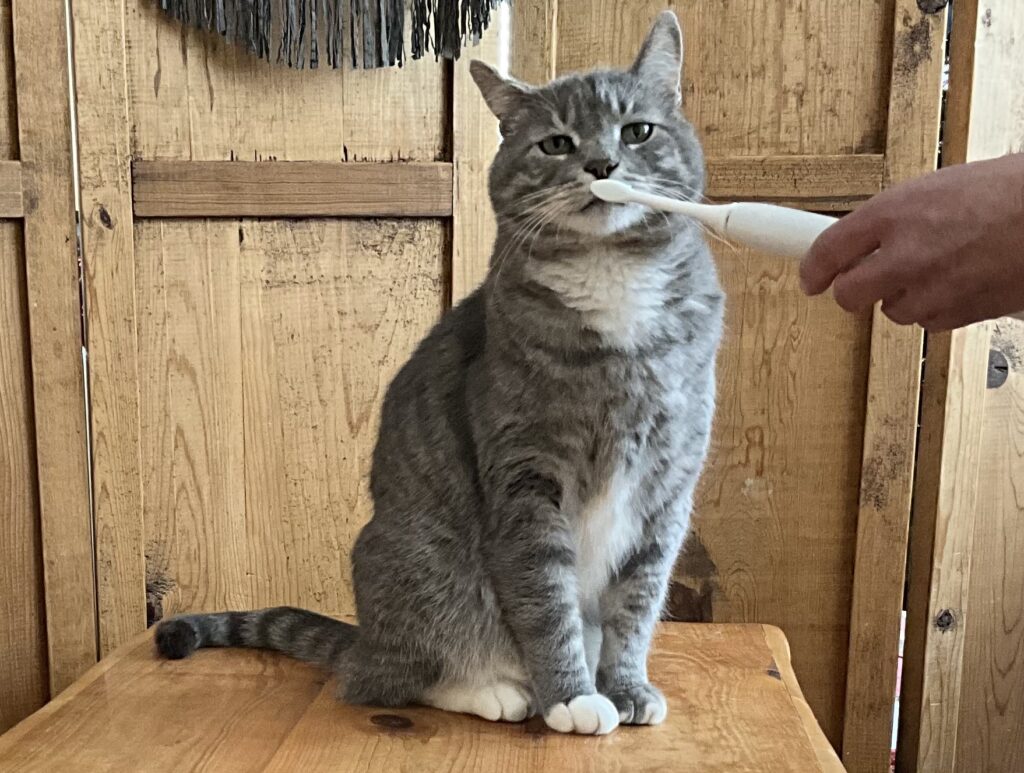
Good dental care for people centers on regular dental cleanings once or twice a year. This is supplemented by home dental care – twice daily brushing and daily (or more) flossing. Our cats should have periodic professional cleanings done under anesthesia but what about home dental care? How about brushing your cat’s teeth?
Brushing your cat’s teeth
The Veterinary Oral Health Council (VOHC) has a list of accepted products for cats. On this list are several dental diets including the over-the-counter Hills Oral Care, a water additive, oral spray and oral gel made by HealthyMouth, in addition to Greenies treats. The list is a bit outdated with the most recent entries dated 2012. Nowhere are toothbrushes or toothpaste.
Having tried the diets, the water additive, and brushing teeth, I have found that hands-down brushing your cat’s teeth is the most effective. Tartar accumulates most frequently on the outside of the cat’s upper premolars and those are the teeth we can target.
The benefits? Brushing reduces the amount of bacteria in the mouth more effectively than water additives and sprays. Cats are prone to developing tooth resorption which is similar in some ways to human cavities. However, where filling cavities works in human teeth, these feline resorptive lesions just get bigger and bigger once they start and filling them does not work – they need to be extracted.
While we don’t really know why tooth resorption occurs in cats, bacteria is thought to play a major role. (“Microbiome analysis of feline odontoclastic resorptive lesions (FORL) and feline oral health”, Thomas et al., J Med Microbiol. 2021; 70(4): 001353.)
For dogs, VOHC recommends the PetSmile brand of toothpaste, that works by dissolving the biofilm that forms on the teeth using hydrogen peroxide. The PetSmile website indicates that this toothpaste can be used for cats also.
Virbac makes the CET brand of dog and cat toothpastes. CET toothpaste contains lactoperoxidase and is designed to boost a naturally occurring anti-bacterial process in the cat’s saliva. Watanabe and colleagues measured bacterial counts on dogs’ teeth and found that simply applying the toothpaste to the teeth reduced bacteria, although not as much as brushing with the toothpaste. (J Vet Med Sci. 2016 Jul; 78(7): 1205–1208. “Inhibitory effect for proliferation of oral bacteria in dogs by tooth brushing and application of toothpaste”)
So, consider brushing your cat’s teeth. To learn more, check out the two-part video series, “Brushing Your Cat’s Teeth: Why and How” in the video gallery at www.felinepurrspective.com. Start with Part 1 to find out which teeth you need to brush, what you need to do this, and a strategy to encourage your cat to accept the toothbrush.

